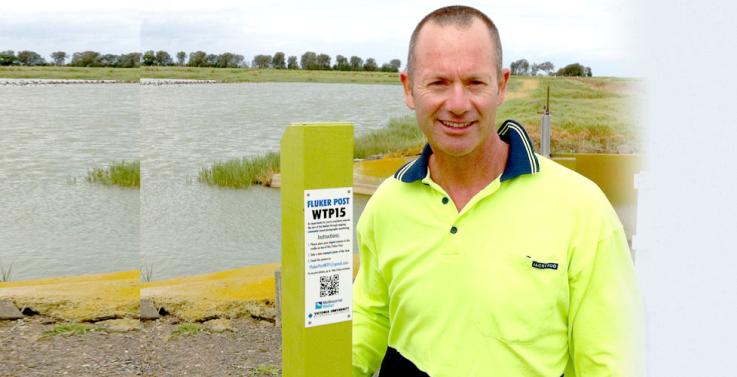
The latest tool for protecting one of Victoria's most important wetlands is a simple wooden post inviting people to photograph the landscape.
Victoria University researcher Dr Martin Fluker has recently installed 30 'Fluker Posts' at Werribee's Western Treatment Plant, which as well as being a major sewage treatment facility is also a Ramsar-listed wetland with significant waterbird populations.
The posts, which are placed at points in need of significant monitoring, contain a small platform for a camera and instructions on where to point, shoot and email the photo. These photographs, taken by Melbourne Water staff or by amateur birdwatchers visiting the facility using their own cameras, are then uploaded to a central site on Google+ photos allowing land managers to monitor these points over time.
"The success of this design is its simplicity," Dr Fluker said. "It has minimal set-up or maintenance costs yet delivers on the need for monitoring large and often remote natural environments. "
The $30,000 project funded by Melbourne Water will initially run for one year with a view to maintaining and extending coverage with the Fluker Posts in coming years.
Melbourne Water biodiversity scientist Dr Will Steele said the simple posts had great value to land managers in providing a cheap yet effective way to monitor wetland vegetation condition and water levels in habitat ponds.
"We hope that the many birdwatchers who visit the Western Treatment Plant will contribute to our management of the site by taking photographs from these Fluker Posts and emailing them in," he said.
While new to the Werribee wetlands, Fluker Posts have been in use for a few years at the You Yangs, Brisbane Ranges and the Great Ocean Walk in Cape Otway where around 420 photographs have been contributed with more than half those from the general public.
Parks Victoria ranger Nick Alexeyeff said the innovative method to collect data was working well.
"By positioning the Fluker Posts in remote locations I am able to gain information from these sites without using resources from here," Mr Alexeyeff said. "This has cost benefits for me by not having to regularly send staff out to monitor these sections, which in turn frees up my team for other work."
He said they had also proved useful in the Otway Ranges for monitoring changes in trail conditions over time and providing visual records for how repairs last.
In fact, six more Fluker Posts are now being installed in Cape Otway to monitor conditions on newly installed trails there.
